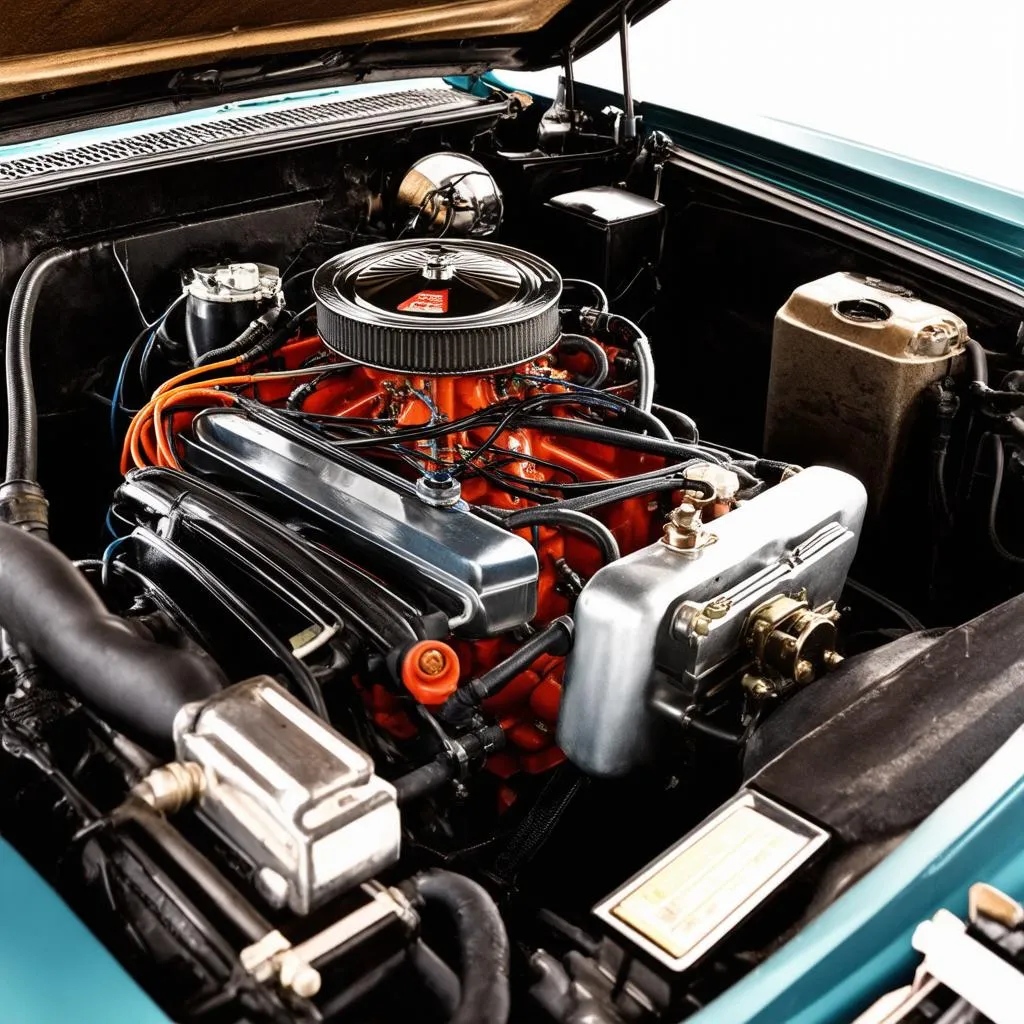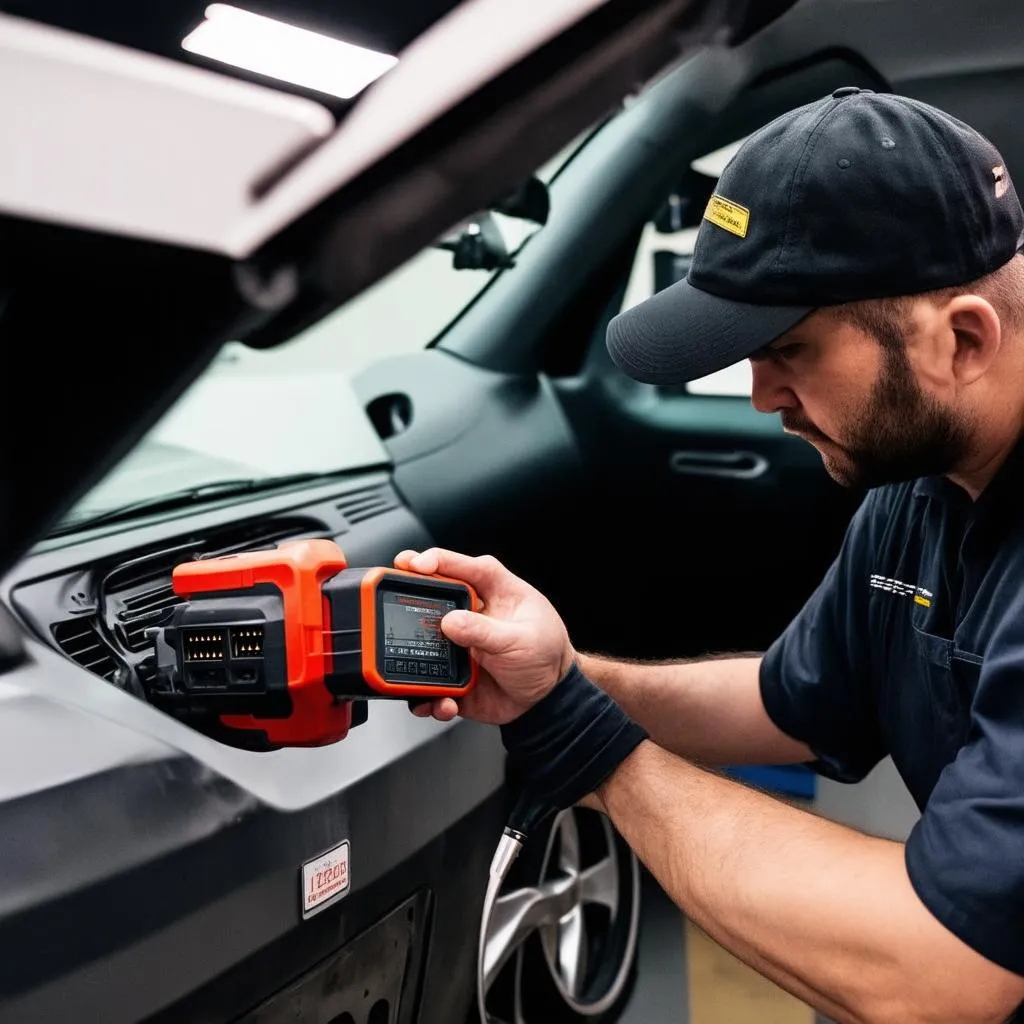Imagine this: you’re cruising down the Pacific Coast Highway in your classic 1965 Ford Mustang, the California sun warming your face. Suddenly, the engine coughs, sputters, and dies. You pull over, pop the hood, and stare at a maze of wires and hoses. Your heart sinks – there’s no familiar OBD-II port in sight. How do you diagnose the problem in this pre-OBD beauty?
This scenario, while fictionalized, highlights a common question among vintage car owners and even some modern car enthusiasts: “How To Scan Cars Without Obd?” Let’s delve into this intriguing query.
Deciphering the Question: What Does “Scanning Without OBD” Really Mean?
Before we dive into solutions, let’s define the question. “Scanning,” in the automotive world, usually refers to retrieving diagnostic trouble codes (DTCs) from a vehicle’s computer, often through the OBD-II port. This port, mandatory in the U.S. for cars made after 1996, provides a standardized interface to access engine and emissions-related data.
So, “scanning without OBD” can mean a few things:
- Accessing diagnostics on pre-OBD vehicles: Cars made before the mid-1990s often have manufacturer-specific diagnostic connectors and protocols.
- Diagnosing issues beyond basic OBD-II data: Even in modern cars, some systems or faults might not be fully accessible via the standard OBD-II protocols.
The Reality of Pre-OBD Diagnostics
The bad news? There’s no universal “scan tool” for pre-OBD cars like there is for OBD-II vehicles. The good news? Options exist, though they require a bit more knowledge and effort:
- Manufacturer-specific tools: Companies like Mercedes-Benz (with their Star Diagnosis system) or BMW (with their GT1/ICOM) have proprietary diagnostic tools for their older models.
- Aftermarket tools for specific makes/models: Some companies specialize in tools for classic car brands like Porsche or Volkswagen.
- DIY methods: Depending on the car and issue, experienced mechanics might use techniques like checking voltage signals with a multimeter or “jumpering” specific connectors to read flashing engine lights as codes.
Beyond Basic OBD-II: When Modern Cars Need More Than a Scan
Even with a modern car boasting an OBD-II port, “scanning” might not tell the whole story. Consider these situations:
- Complex electrical problems: Intermittent faults, communication errors between modules, or issues within a specific module (like the ABS or airbag control unit) might require specialized tools and software beyond a basic code reader.
- Non-emissions-related systems: While OBD-II focuses on emissions, issues like air conditioning, infotainment, or advanced driver-assistance systems (ADAS) often require dealer-level scan tools.
In such cases, options include:
- Advanced aftermarket scan tools: Professional-grade tools like those from Autel, Launch, or Snap-on offer more in-depth diagnostics, bi-directional controls, and access to manufacturer-specific systems.
- Dealer-level tools: These offer the most comprehensive diagnostics and programming capabilities but are usually expensive and restricted to dealerships and specialized repair shops.
Common Questions About Scanning Without OBD
Here are some frequently asked questions related to this topic:
- Can I use a regular OBD-II scanner on my classic car? Unfortunately, no. Pre-OBD cars use different connectors and communication protocols.
- My check engine light is on, but my OBD-II scanner says “No Codes.” What’s wrong? This could indicate a problem with the OBD-II system itself (like a blown fuse), or the issue might be in a system not fully covered by OBD-II.
- How do I know which diagnostic tool is right for my car? Researching online forums specific to your car’s make and model is a good starting point. Consult with experienced mechanics specializing in your vehicle type.
Navigating the World of Automotive Diagnostics
Whether you’re a classic car aficionado tinkering in your garage in Detroit or a modern car owner facing a perplexing dashboard light on a bustling New York City street, understanding the nuances of car diagnostics is crucial.
While the convenience of the OBD-II port has simplified things for many, don’t forget the vast world of automotive technology that existed before its standardization. And even in today’s tech-laden vehicles, remember that “scanning” is just one piece of the diagnostic puzzle.
 Vintage Car Engine Bay
Vintage Car Engine Bay
 Mechanic Using Diagnostic Tool
Mechanic Using Diagnostic Tool
Need help navigating the world of automotive diagnostics or finding the right tools for your car? Don’t hesitate to reach out to us via WhatsApp at +84767531508. Our team of automotive experts is available 24/7 to provide support and guidance.
We’ve also got a wealth of information on other car-related topics, so feel free to explore our website further. For example, you might find our articles on ELM327 Bluetooth OBD-II Scanners or The Best Bluetooth OBD Code Readers helpful. Happy diagnosing!